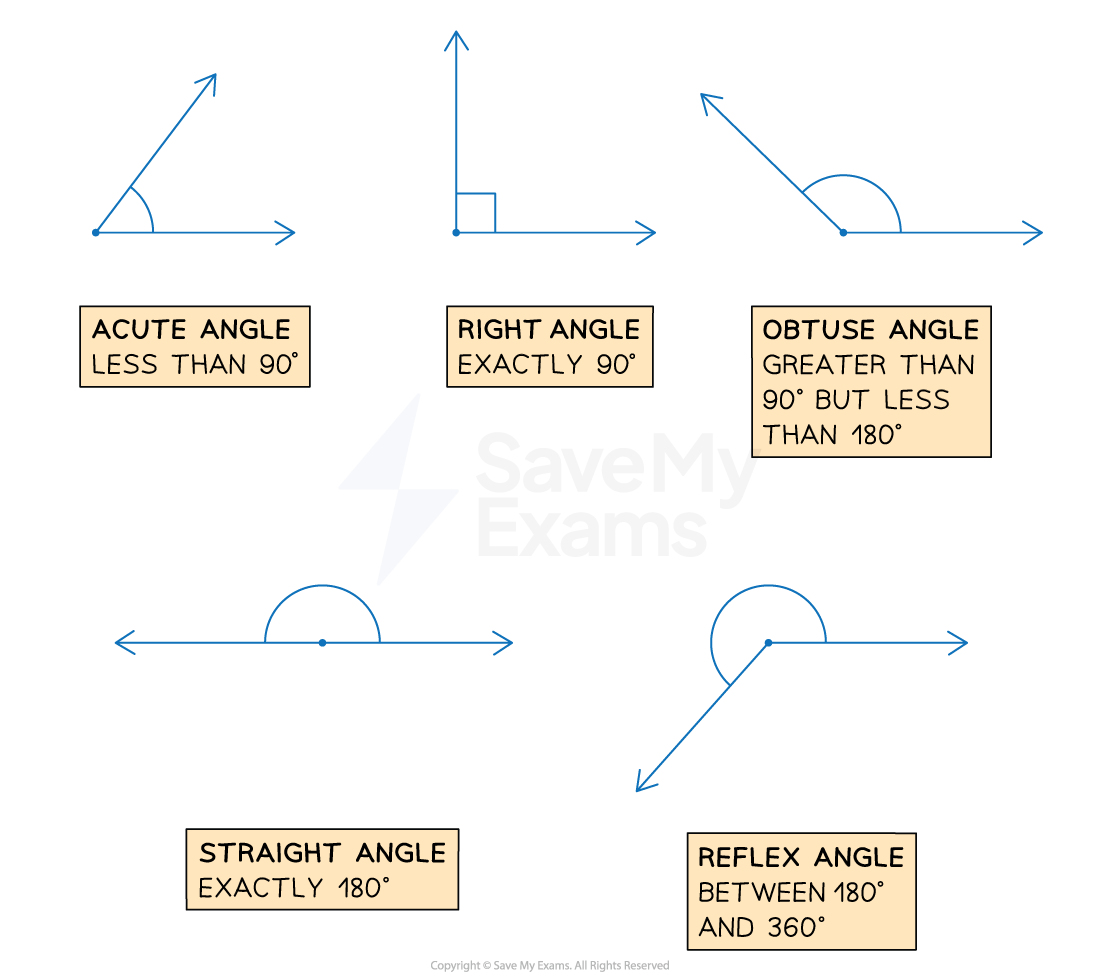Introduction to Lines & Angles (OCR GCSE Maths): Revision Note
Exam code: J560
Properties of lines & angles
What properties do I need to know about lines?
A line is a straight, one dimensional path that extends forever
A line segment is a part of a line, it has a start and an end point
A line segment that starts at the point A and ends at the point B is usually labelled AB
Two lines with single marks are of equal length
Two other lines with double marks are of (a different) equal length
Two lines are parallel if they continue in the same direction as each other forever
Parallel lines never intersect (meet)
Parallel lines should be marked with arrows
If there is more than one pair (or set) of parallel lines in a diagram then multiple arrows will be used

Two lines are perpendicular if they intersect at right-angles (90°)
What properties do I need to know about angles?
When two lines intersect (meet) they will form an angle
There are different types of angles
An angle that is less than 90° is called an acute angle
An angle that is exactly 90° is called a right angle
An angle that is greater than 90° and less than 180° is called an obtuse angle
An angle that is exactly 180° is called a straight angle
An angle that is greater than 180° but less than 360° is called a reflex angle

Angles at a point add up to 360°
Angles on a straight line add up to 180°
Angles that add up to 180° are called supplementary angles
e.g. 30 and 150 degrees are supplementary angles
Examiner Tips and Tricks
Do not assume two lines are parallel or perpendicular just because they look it, always look out for the arrows or right angle in a diagram, or read the question to look for clues
Worked Example
Write down the mathematical name for an angle which is greater than 90° but less than 180°.
An obtuse angle

Unlock more, it's free!
Did this page help you?